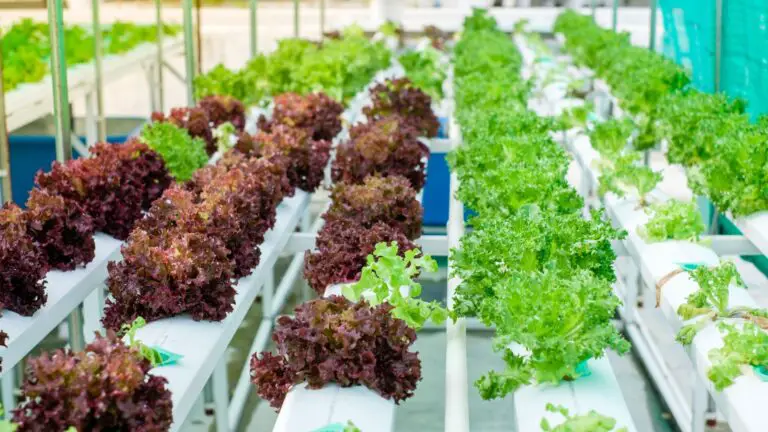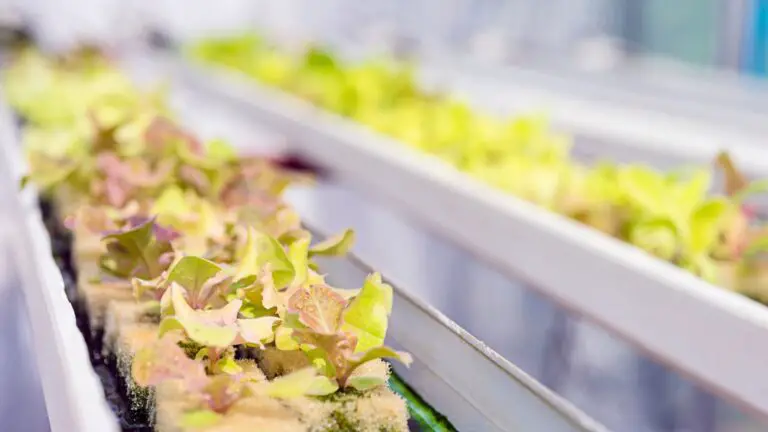Turn Your Boring Backyard into a Profitable Hydroponics Garden
Disclosure: Your purchases through our links may earn us a small commission, supporting our site’s ability to provide valuable information to our readers. Rest assured, it won’t impact your price. Thank you for your support.
Do you have a backyard that you hardly use? Or are you tired of your boring backyard just sitting there and taking up space? Why not turn it into a profitable hydroponic garden? Not only will you have fresh and organic produce at your fingertips, but you can also turn your love for gardening into a lucrative business.
Hydroponics is a growing trend that allows you to grow your plants without soil. It may sound complicated at first, but it’s a lot simpler than you think. You don’t need any gardening experience to start, and the results can be gratifying.
Why Should You Consider Hydroponics Over Traditional Gardening?
Hydroponics is a method of growing plants without soil, using nutrient-rich water solutions instead. This allows for more efficient use of resources such as water and space, resulting in faster growth and higher yields than traditional gardening methods. Plus, you can grow various plants year-round, regardless of climate or soil conditions. The blog post “successful hydroponics in any climate” might be useful to learn more on this.
Now that you’re convinced to give hydroponics a shot, let’s dive into the steps you can take to turn your boring backyard into a profitable organic hydroponic garden.
What Are the Steps to Turn Your Boring Backyard Into a Profitable Organic Hydroponic Garden
Step 1: Think about which plants you would like to grow and the garden layout
The first step in starting a hydroponic garden is to decide what plants you want to grow. Hydroponics can work for various plants, from leafy greens to fruit and even flowers. However, some plants require more specialized equipment than others. You’ll also need to consider factors such as sunlight, water source, and access to electricity.
Do some research on what plants will thrive in your local climate of the backyard, as well as what will sell well in your area. For example, if you want to grow strawberries, you’ll need a system that provides runners for the plant. On the other hand, if you’re growing lettuce, you can keep it simple with a basic setup.
Related:
Grow Light vs. Sunlight: Which is the Best Option for Your Garden?
Best Plants for Hydroponics to Grow Under a Grow Light
Cheap Grow Lights Alternatives Used in Indoor Hydroponics
Step 2: Decide the right type of hydroponic system you want to use
Once you’ve decided on what plants to grow, it’s time to choose a hydroponic system. There are many types of hydroponic systems, each with benefits and drawbacks. Some popular systems for profitable business include deep water culture, nutrient film technique, ebb, and flow and drip irrigation.
DWC hydroponics is the simplest and least expensive option, but it’s only suitable for some plants. Ebb and flow systems are more complex but can be more versatile. The nutrient film technique can be used for various plants and is suitable for larger operations. Drip irrigation systems are also popular, but they require more maintenance. Do your research and choose a system that suits your needs and budget.
Related:
How to Set Up a Nutrient Film Technique – NFT Hydroponics?
How to Choose the Right Hydroponic System for Your Needs?
Step 3: Make sure you have the right equipment
The next step is to ensure you have all the essential equipment for your hydroponic system. Depending on the type of system you choose, this may include pumps and filters, reservoirs, nutrient solutions, grow lights, grow beds or trays, and more.
You will also need to ensure you have the proper containers and supports for your plants. Again, this can vary depending on the type of system you choose and what plants you are growing.
Research what equipment you’ll need to get the best results for your project. Some plants require special lighting or nutrient solutions, while others can be grown with basic supplies.
Even though hydroponics doesn’t involve soil, plants still need a substance to which their roots can cling and absorb necessary nutrients. Perlite, coconut coir, and rockwool are popular mediums used for this purpose.
Remember that hydroponics is a process, so additional costs may be involved as you refine and adjust your setup. For example, you may need to purchase additional pumps and other equipment if your system performs differently than expected. Stay informed, stay patient, and be willing to make adjustments as needed. Doing so will help you get the most out of your hydroponic system.
Also, remember that hydroponics is an ongoing process. You may need to purchase more equipment or supplies as the demand for your product increases, so it’s essential to plan and budget accordingly. And remember to stay up-to-date with the latest hydroponic techniques and technologies so you can always provide top-notch products and services!
If you are looking for buying hydroponic equipment consider checking the below given links to get them from Amazon.
- Deep Water Culture (DWC) system
Nutrient Film Technique (NFT) system
Drip System related equipment
Ebb & Flow (Flood and drain) control system
Grow lights, Grow light reflector, Grow light fixture, Grow light timer, Grow light strips, Strips grow light with reflector
Air pump & Air stone
Water pump
Net cups
Digital pH meter
Nutrient test kit
TDS meter
Timer
Thermometer
Hygrometer
Watering can or hose
Scissors or Trimmers
Measuring cups
Grow room glasses
Related:
10 Essential Tools for Indoor Home-Based Hydroponic Gardeners.
The Essential Equipment and Guide to Winter Hydroponics – Keep Your Plants Thrive
Step 4: Begin cultivating your plants and watch them flourish!
When your hydroponic system is up and running, it’s time to start growing your plants. Most hydroponic systems require you to mix your nutrient solution, which needs to be pH balanced and contain the right amounts of nutrients for your plants.
Nutrient solutions are a critical element of hydroponics, so it’s essential that you carefully study which nutrients your plants need and how much to supply them with. You can learn more on the importance of NPK values read this post.
In a hydroponic system, you have complete control over the growing environment, which means you can optimize it for the best possible results. Monitor your plants closely and adjust the nutrient levels as needed. Follow the instructions that come with your system to ensure that you’re providing your plants with everything they need to thrive.
Step 5: Harvest and sell your products and have the right marketing strategy in place
Once your plants are growing strong and healthy, it’s time to start harvesting and selling your produce. Many options exist for selling hydroponic produce, from farmers’ markets to local grocery stores. Make sure you have the right marketing strategy in place. Let people know about your hydroponic business so that they can find out about it and purchase your products.
- You can sell your products directly to consumers at local farmers’ markets or online (how to).
- You can sell directly to restaurants and caterers that value fresh, locally-grown produce.
- Look for markets specializing in organic or locally grown products, as these can be the most profitable. Remember that the key to success is to provide high-quality products consistently. With the right approach, hydroponics can turn your boring backyard into a lucrative source of income.
- You can host workshops or tours to educate others about hydroponics and showcase your products.
- Create a website or blog to post updates on what you’re growing, share tips and advice on hydroponics, and showcase photos of your plants. You can also use social media to spread the word about your business and reach more potential customers.
With the right marketing strategy in place, you can ensure that people know exactly what you are offering!
Conclusion
Hydroponic gardening is rapidly gaining popularity among hobbyists and professionals alike. Using a hydroponic system, you can grow various plants without the hassles of soil gardening.
Hydroponics could be the answer if you’re looking for a profitable way to use your backyard. You can start small and work your way up, or go all out and create a full-scale hydroponic farm.
Hydroponics is a fascinating field, and watching your plants flourish in this type of system can be incredibly rewarding. You can create a successful hydroponic business with proper preparation, research, and planning. Good luck!
Thank you for reading!
Also, read:
11 Steps to Choosing the Right Fan for your Hydroponic Grow Rooms





